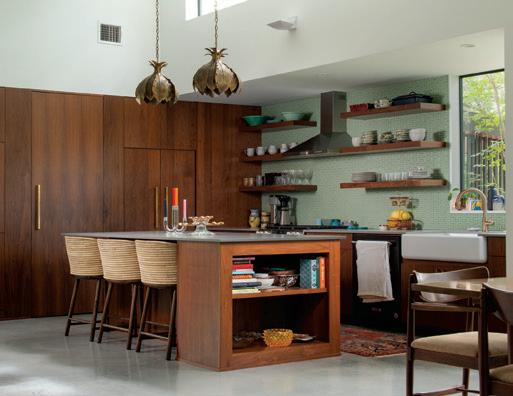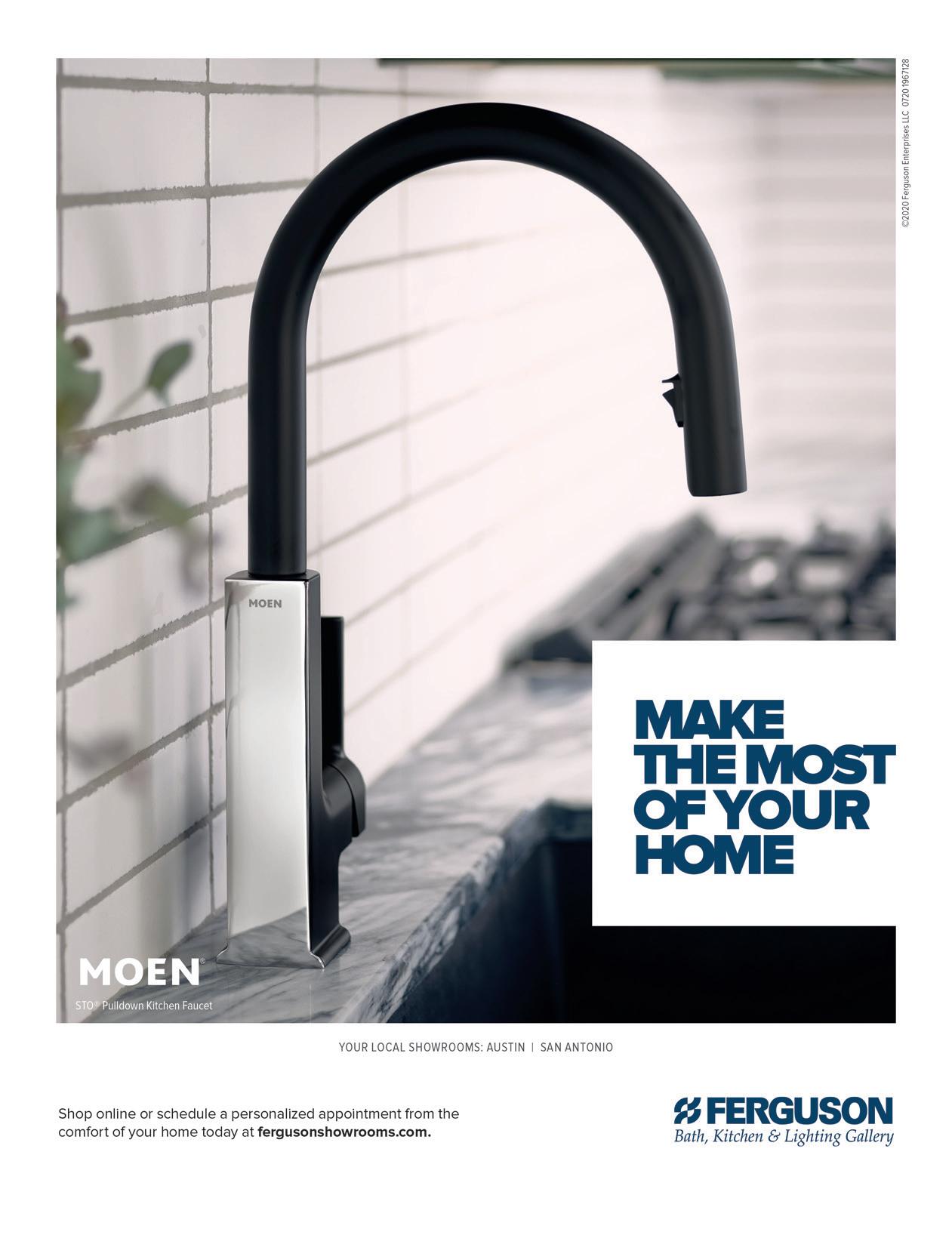
12 minute read
Homes Tour 2020
ALTERSTUDIO ARCHITECTURE & MELL LAWRENCE ARCHITECTS
BALDRIDGE ARCHITECTS
Advertisement

TIM CUPPETT ARCHITECTS
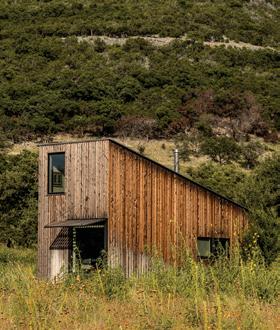

CHARLES DI PIAZZA ARCHITECTURE

The AIA Austin Homes Tour is an annual event that showcases the work of
local Austin architects on a variety of homes and project types in and around Austin. For 33 years, the tour has been a destination event that brings together over 5,000 design enthusiasts from Austin and beyond. For its 34th year, the Homes Tour will shift to a virtual format to ensure the safety of its guests during the current pandemic, allowing people around the world to tune in to the four-day event featuring an inside look at nine beautiful Austin homes. Join the Tour October 16-19 for access to videos, 360-degree walkthroughs, live sessions with architects and collaborators, and more self-guided features.
Architects featured include Alterstudio Architecture and Mell Lawrence
Architects (combined project), baldridgeARCHITECTS, Tim Cuppett Architects, Charles Di Piazza Architecture, Hugh Jefferson Randolph Architects, Jobe Corral Architects, Mark Odom Studio, Studio 512 and Thoughtbarn.
For tickets, visit aiaaustinhomestour.com.
STUDIO 512
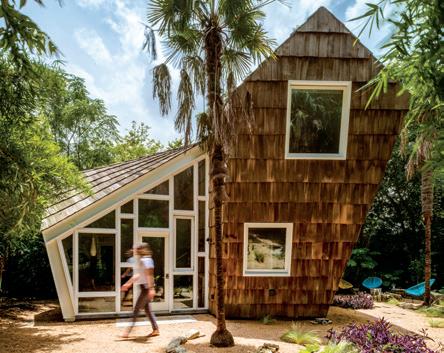

THOUGHTBARN
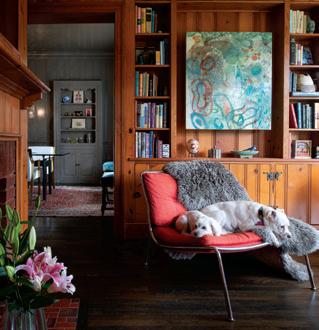



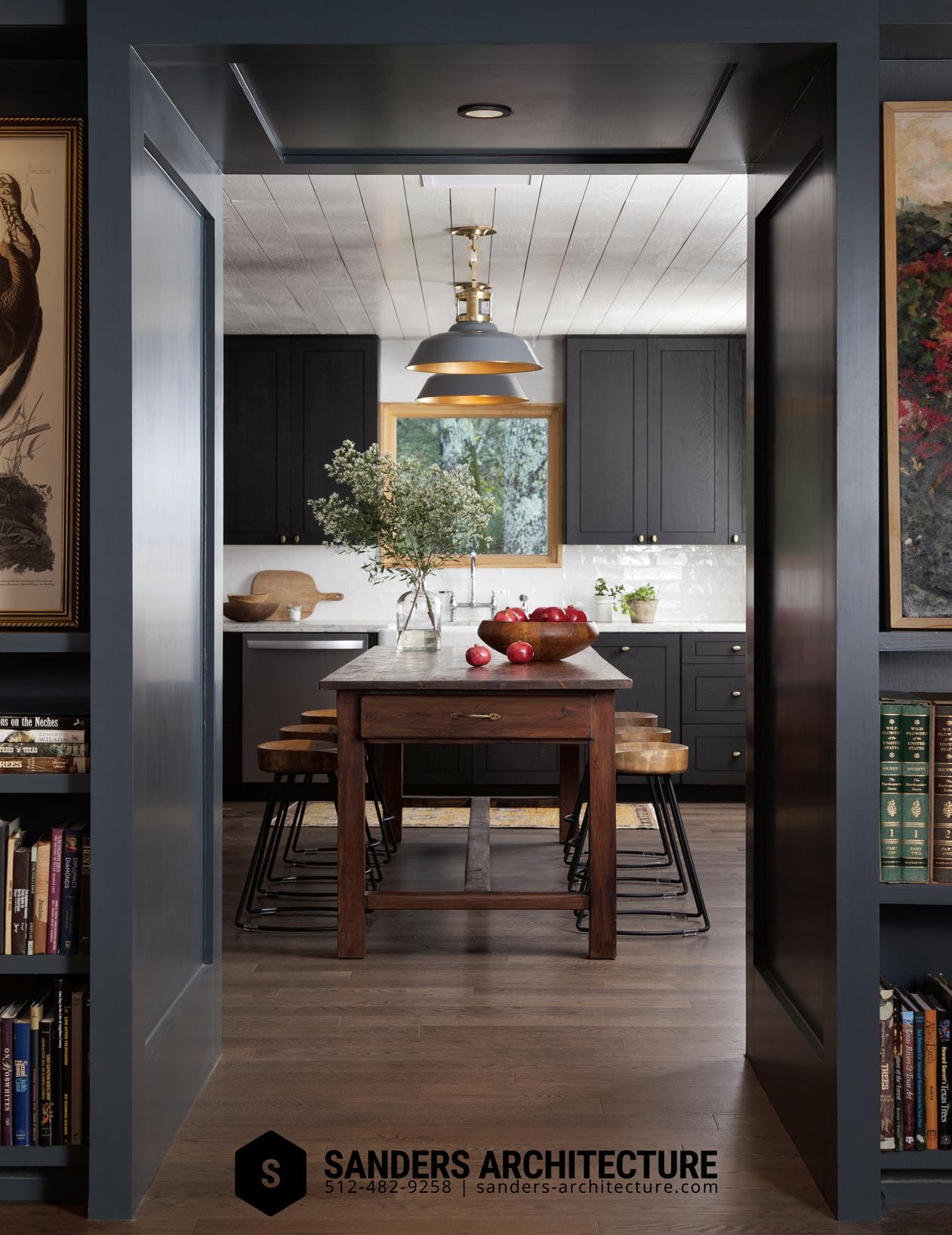

Project Name: West Campus Builder: Green Places, Inc.,
Alex Ferdman


Starting with an 80-foot-wide lot, the architect/owners and their neighbors obtained a variance to subdivide the property into two thin lots. The resulting north lot had the dual benefit and limitation of being surrounded by mature live oaks which, in combination with parking requirements and setbacks, constrained the building’s footprint. The resulting net-zero home for a family of five is expressed as a vertically clad wood box over a more agile first floor of mill-finished steel panels.
On the ground level, the steel panels wrap interior elements and, in combination with frameless glazing, extend the indoors out. A series of oak screens visually connect the public realm of the home while providing spatial intimacy and material texture. Second floor windows extend above and below the ceiling and floor line to fully engage the tree canopy at every bedroom. IKEA cabinets with custom steel bulkheads and air grills provide efficient storage. These expanses of white millwork in combination with smooth, finished walls provide a counterpoint to the more tactile material expressions.

baldridgeARCHITECTS


The Barton Hills Brickhouse is for a couple, both involved in the music festival business, along with their three beagles. The owners sought a modern house with low-maintenance, durable materials and a true sense of indoor/outdoor living coupled with something of a Palm Desert vibe.
While the house takes its inspiration from masonry highmodernist works, the project was designed to accept eclectic furnishings and the couple’s music-oriented, casual lifestyle. The house is clad in patterned white brick accentuated by Ipe siding to reinforce the California modern feel of the house.
Desert-modern landscaping is set within stepped terraces made of board-formed concrete and weathered steel. These terraces negotiate the difficult grades across the quarter-acre lot, creating outdoor ‘‘rooms’’ for swimming, grilling, dining, entertaining and controlled areas for their beloved beagles to play. Project Name: Barton Hills Brickhouse Builder: Arrowhead Construction Neighborhood: Barton Hills Square feet: 4,141 Project type: New construction Bed/Bath: 4 beds / 3.5 baths


Tim Cuppett Architects

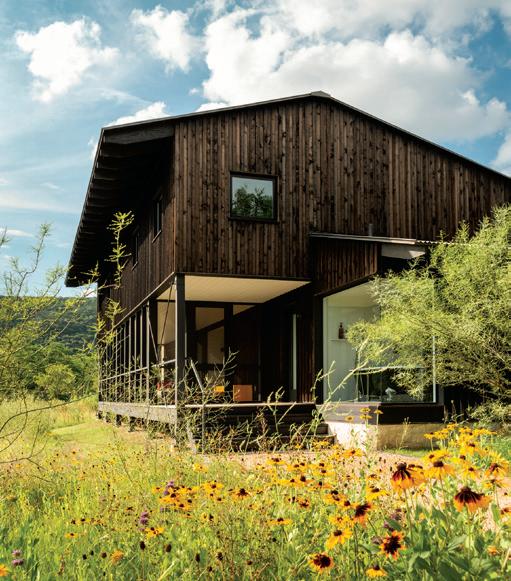
Project Name: Camp Frio Builder: Dalgleish Construction Company Neighborhood: Texas Hill Country Square feet: Main house - 1,980
Cottages - 990 Art Studio/Meditation Room/ Garage - 650
A multi-family compound rises from a remote, grassy valley on the bank of the Frio River deep in the Texas Hill Country.
The goal for this project was to create shelters with an environmental experience unique to its place where summer madness gives way to winter stillness; where city life and digital stimulation are replaced by the experience of feeling a cool breeze or snuggling up to a warm fire.
Structures consist of a main house, meditation room over art studio/garage, and two guest studio cottages. The main house and cottages are linked by a slightly elevated walkway which enables barefoot kids to run back and forth over the tall grass.
A “breezeway” bookended by concealed multi-slide doors bisects the main house, enabling alfresco dining most of the year; alternatively, the space is zoned and can be enclosed for heating. Screened porches, front and back, envelop cozy living chambers. Secondary sleeping spaces occupy an attic that spans the rear porch of the main house while cottages feature open “kids’” lofts.
Structures were detailed for simplicity of construction with readily available, local materials and fashioned by local tradesmen.



Charles Di
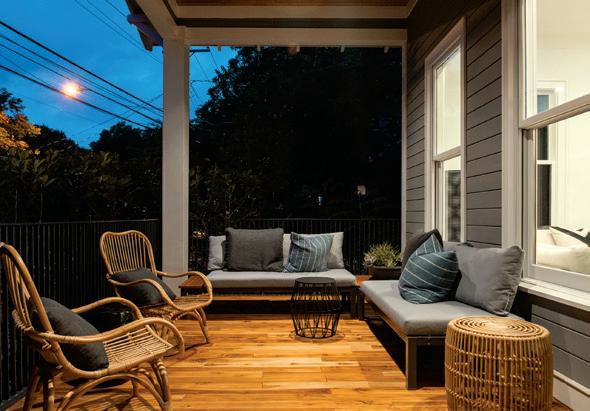
Project Name: Dogtrot House Builder: 22 Construction, LLC Neighborhood: Central Austin Square feet: 1,400 Project type: Renovation Bed/Bath: 2 beds / 2 baths

Piazza Architects
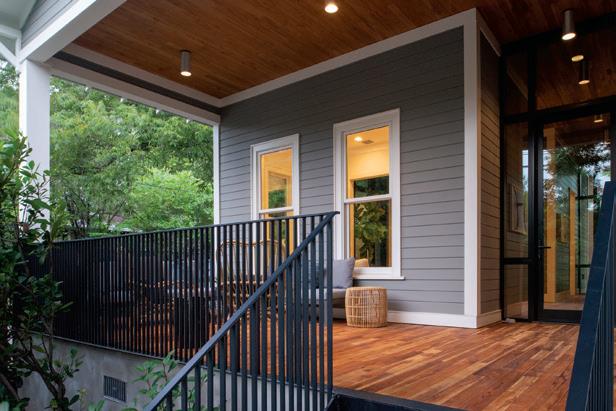
The Dogtrot House is a remodeled residence from 1926. Surveys indicate it was originally a two-unit “dog trot,” and the goal was to reinterpret this configuration.
The concept articulates four independent “cabins” sitting between a deck and a roof. The idea of multiple units is reinforced by using breezeways, or “trots,” to separate functions and bring exterior features to the interior.
Each cabin is singularly tasked: “Living,” “Cooking,” or “Sleeping.” One trot accommodates floating tasks such as “Dining” or “Study” and the second serves as an axis between the front and back doors. Movement between cabins requires passage through either trot via thresholds that are identically detailed on both interior and exterior.
To reinforce the independence of these cabins, traditional clapboard siding and overlaid trim are contrasted with contemporary full glazing at the end of each trot, creating the illusion of a void between each unit, and allowing the passage of light and breeze.


A renovation and addition to a 1939 Page Southerland & Page designed home displays the changes as a series of collages rather than a historical period piece or an overtly modern contrast. The semi-detached bedroom wing, large porch, kitchen and master suite are the project’s focus. A prominent feature of the boy’s wing is a cupola which allows for a loft above a shared bathroom. Throughout the home, color and architectural decorations are utilized for a sense of whimsy.
Key to sustainability, many materials were salvaged from homes and buildings in Austin. Another important aspect of this family home is that it is also a small urban farm with a sustainable vegetable garden and animal pen.
This home showcases a continuance of history and an expression that the architecture is but one element that creates a larger sense of home.
Hugh Jefferson Randolph
Architects
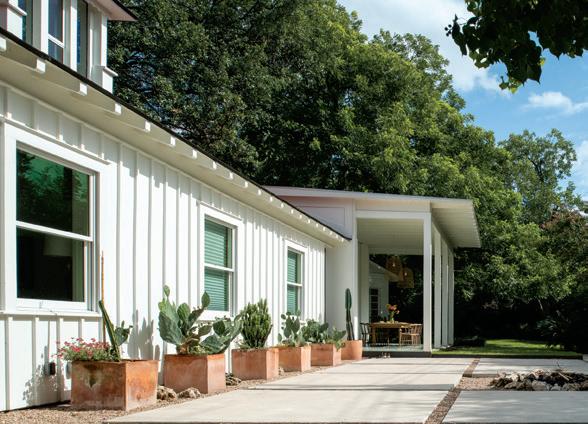
Project Name: Windsor Road Farm Builder: Mend Services Neighborhood: Tarrytown Square feet: 3,377 Project type: Historical restoration,
renovation and addition
Bed/Bath: 3 beds / 2.5 baths
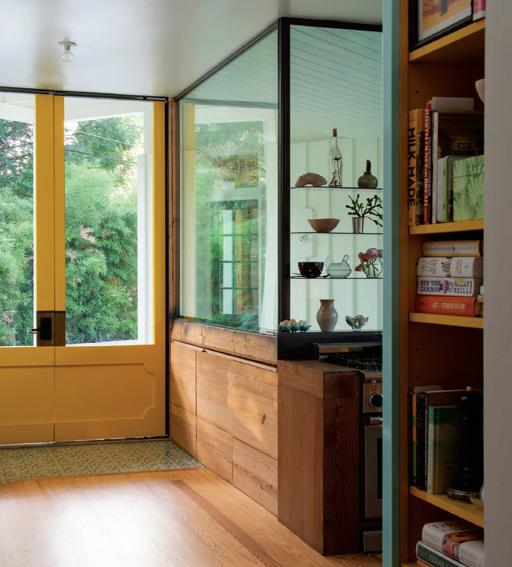

Jobe Corral

Garland Turner
Neighborhood: Clarksville Square feet: 1,500 Project type: Renovation / Addition Bed/Bath: 3 beds / 3 baths
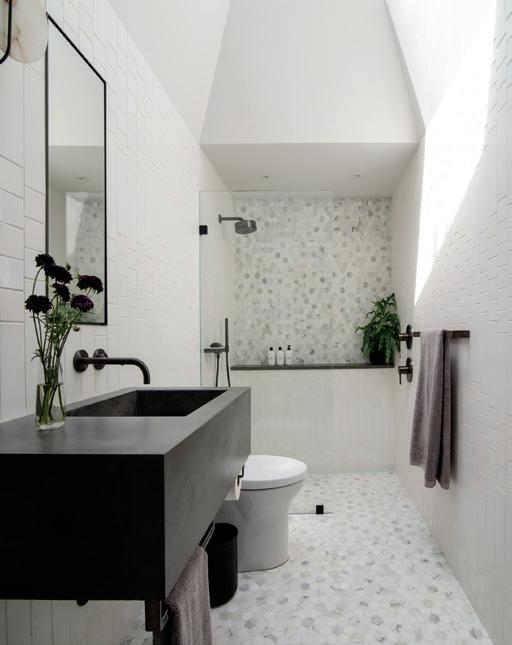
Architects
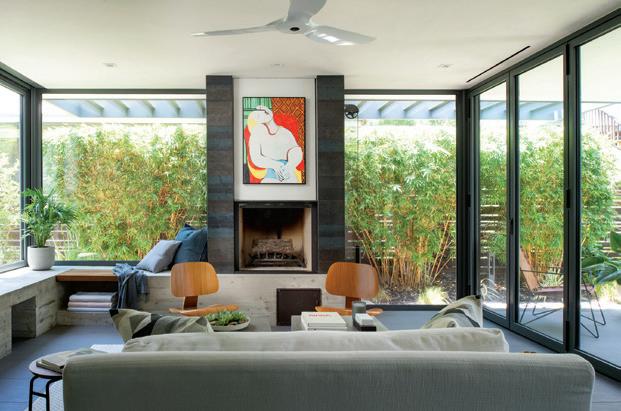
The Solarium is a modern addition to a historic Craftsman house.
This light-filled structure transforms the existing bungalow while complementing its origin. Built of steel, glass and board-formed concrete, the family room opens up entirely, with landscape serving as a backdrop to the glass walls. The design showcases the handmade craft details, including a custom pulley for the fireplace screen.
The Solarium’s companion structure is a small restroom under the stairway to a guest apartment consisting of glowing frosted glass, steel and walnut wood details.
The modern structures are distinct from the Craftsman home
while following the same rules of attention to detail and understanding of the craftsmanship required to build it. As an engineer, the homeowner has a passion for detailing and functionality, and how materials can work together to create something artful. The house now demonstrates this philosophy as expressed in two different centuries.



JAYCORDER.COM
512.243.8507

Mark Odom Studio

Doug Cameron

Inglewood Residence is a light-filled home designed with a circulation sequence centered around various courtyards. The existing trees were integral to the design, both in terms of site preservation and heightening the relationship between the interior and exterior.
An abundance of floor-to-ceiling windows line each space. Terraced zones are created internally to strengthen the interior layout as well as maintain visual perspective. A continuous brick wall acts as a spine, showcasing the north-south axis of the house, while also connecting each space.
In response to the homeowner’s appreciation for mid-century architecture, quintessential design and construction elements were included, such as vertical windows set deep into masonry walls, views into lush courtyards, exterior materials used on the interior, indoor planters, slatted screen walls and custom terrazzo floors.
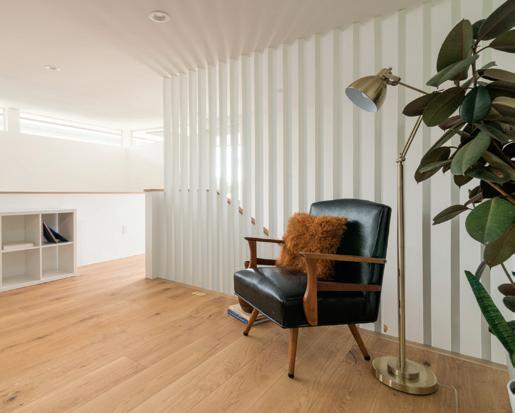
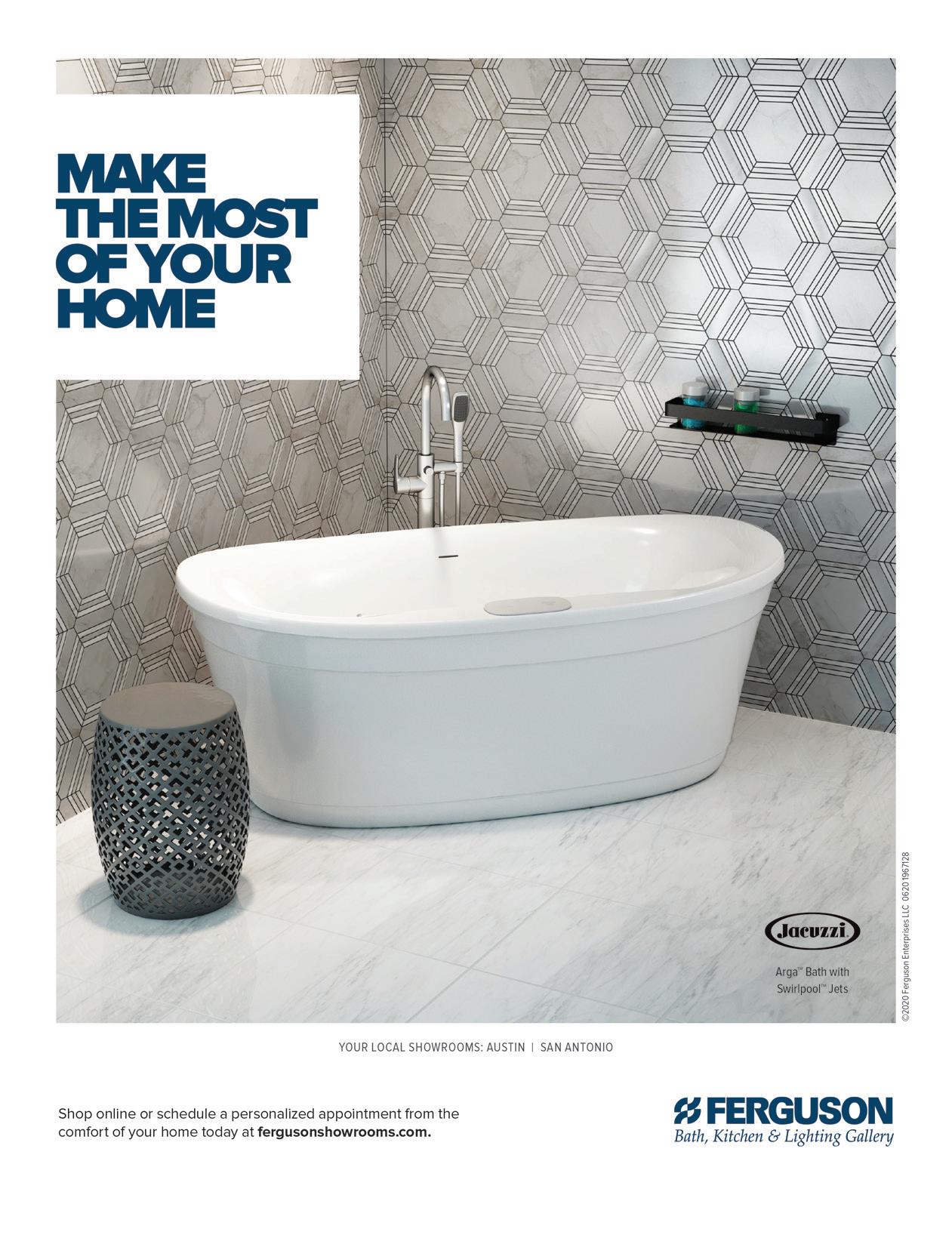
Studio 512

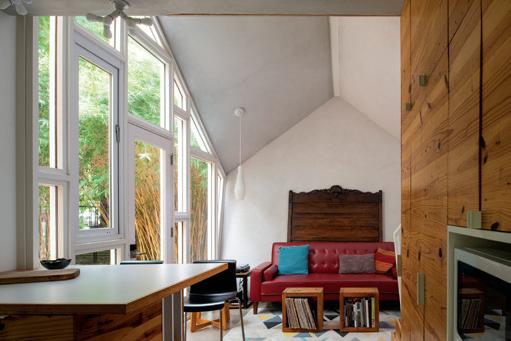
Project Name: The Hive Builder: Studio 512 Neighborhood: Chestnut Neighborhood,
Central East Austin
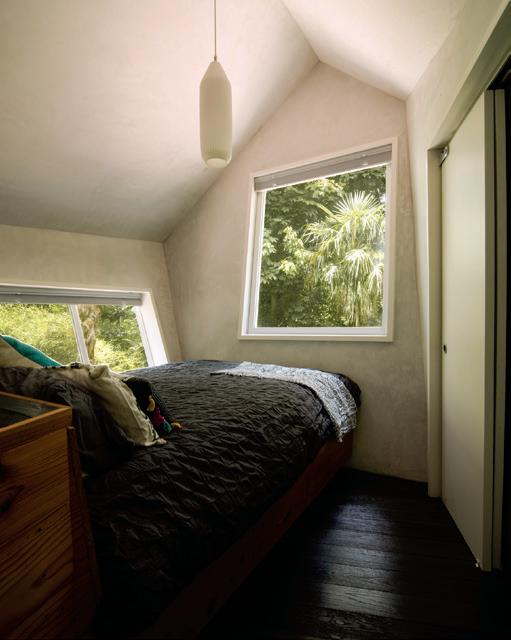
The Hive’s unique design draws inspiration from Dutch and Japanese precedents that find creative solutions when faced with spatial constraints. Walls tilt from the slab, hugging building setback planes along with an angled utility easement to add volume where needed while adhering to the City of Austin’s impervious cover requirements which limited the footprint to 320 square feet.
By carefully tailoring the space in three dimensions, rooms are cut down and expanded to suit the program. Kitchen walls lean out for increased counter space. A desk with cantilevered bookshelves occupies a low spot in the ceiling at the top of the stairs and doubles as a railing. The bedroom has only 22 square feet of floor

space, yet feels expansive with large windows and a built-in queensize bed. Also contained within the compact structure is a bath with walk-in shower and floating bench, a closet with stackable laundry, a covered side entry with private outdoor shower, built-in cabinets and shelves throughout, and an exterior closet that allows for bike storage beneath the stair.
THOUGHTBARN


This Barton Hills home is nestled in a grove of heritage oaks on a large urban lot. A distinctive angular roof form and black vertical siding simultaneously camouflage and contrast the house with its leafy surroundings. The siding is a common fiber-cement “board and batten.” Painted black, with battens multiplied in a dense, vertical pattern, the house takes on artful, forest-like qualities.
The floor plan is organized with a public wing, a private wing and a living room bridging between. Initially a renovation project, the footprint retains vestiges of the original, which allowed certain “grandfathered” areas of the trees’ root zones to be built over.
Inside, the client’s distinctive tastes are reflected in an eclectic palette of walnut millwork, patterned tile and colorful textiles. Buried at the center of the house is a bathroom bathed in light from overhead, a sanctum-like retreat from the exuberant embrace of the outdoors elsewhere in the house. Project Name: The Ridge Builder: R Builders, Mark Rehberg Neighborhood: Barton Hills Square feet: 2,585 Project type: Renovation Bed/Bath: 3 beds / 3 baths

